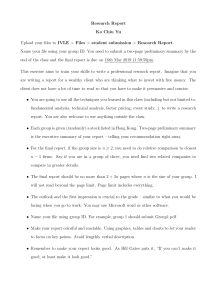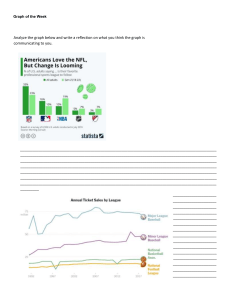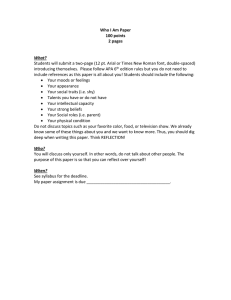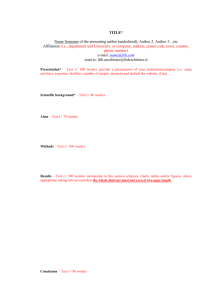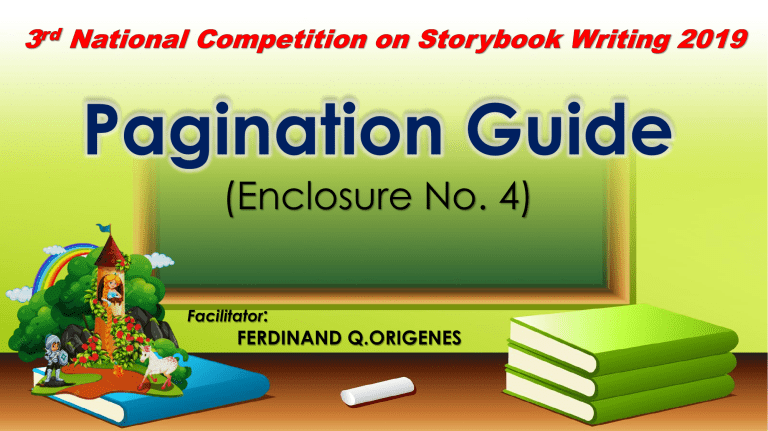
Pagination Guide (Enclosure No. 4) Facilitator: FERDINAND Q.ORIGENES Page Contents 1 Front Cover (should be in title case capitalization) 2 Inside Front Cover (provided as an endpaper, may be decorated using the main characters or plot reference; designed as two-page spread with page 2 ) 3 Endpaper (designed as two-page spread with 2) List of Competencies covered, together with their respective codes, shall be placed on the right side. (Size 11 Times New Roman set in italics, flushed right) 4 Copyright Page (template to be transmitted by the Regional Secretariats) 5 Title Page (should contain only the title of the storybook, with stripped cover design, must not contain the name of the author. 6-24 Story panels / sequences 25 End of story (may be part of the text narrative or an image) 26 Endpaper (designed as two-page spread with page 27) 27 Endpaper (designed as two-page spread with page 26 Author and Illustration identification box shall be placed on the lower part. 28 Back cover (should contain synopsis or short teaser to the story; maximum of 50 words) Criteria for Judging (Enclosure No. 5) Facilitator: FERDINAND Q.ORIGENES Division and Regional Manuscript Screening Criteria Factors Percentage Concept Originality and local flavor 20% Development of the Theme and Learning Competency Artistic presentation, use of literary device (idioms, figures of speech, etc.) appropriate tone of the story, story progression (three-act, framing, etc.) unpredictability, conflict presentation and resolution, utilization of character, effective use of dialog (as needed) Clarity of the theme, effective presentation and treatment of competency, appropriateness to grade level Presentation Standards Spelling, punctuation, grammar, usage, orthographic compliance, styling Storytelling Style - Plot and pacing - Characterization - Dialog 40% 25% 15% Contest on Storybook Designing and Illustration (Regional Level) Criteria Factors Percentage Purpose, intent, message 40% Use of appropriate media in relation to the story 15% Technique and Skill Expertise, consistency,etc 25% Viewer Reception/Overall Design and Artistic Composition Use of elements and principles of art 20% Appropriateness of the illustration Media/mode of Presentation Storybook Judging(Regional Level) Criteria Factors Percentage Text Concept/Premise Storytelling Style Plot and Pacing Characterization and/or Dialog Development of the Theme Development of Learning Competency Presentation Standards 60% Appropriateness of the Illustration Media/Mode of Presentation Technique and Skill Viewer Reception/Overall Design and Artistic Composition 40% Art Social Content Guidelines (Enclosure No. 9) Facilitator: FERDINAND Q.ORIGENES Social content refers to themes or topics for which the DepEd prescribes certain guidelines whenever they are included or referred to in lessons in the learning resources. *The Filipino Learner *The Filipino Nation and Philippine Society *Citizenship and Social Responsibility *Individuals and Social Identities *Social Institutions (Family, Religions, Work institutions, Commercial entities) *Gender *Media, Technology, and Communication *Healthy and Safety *Environment
